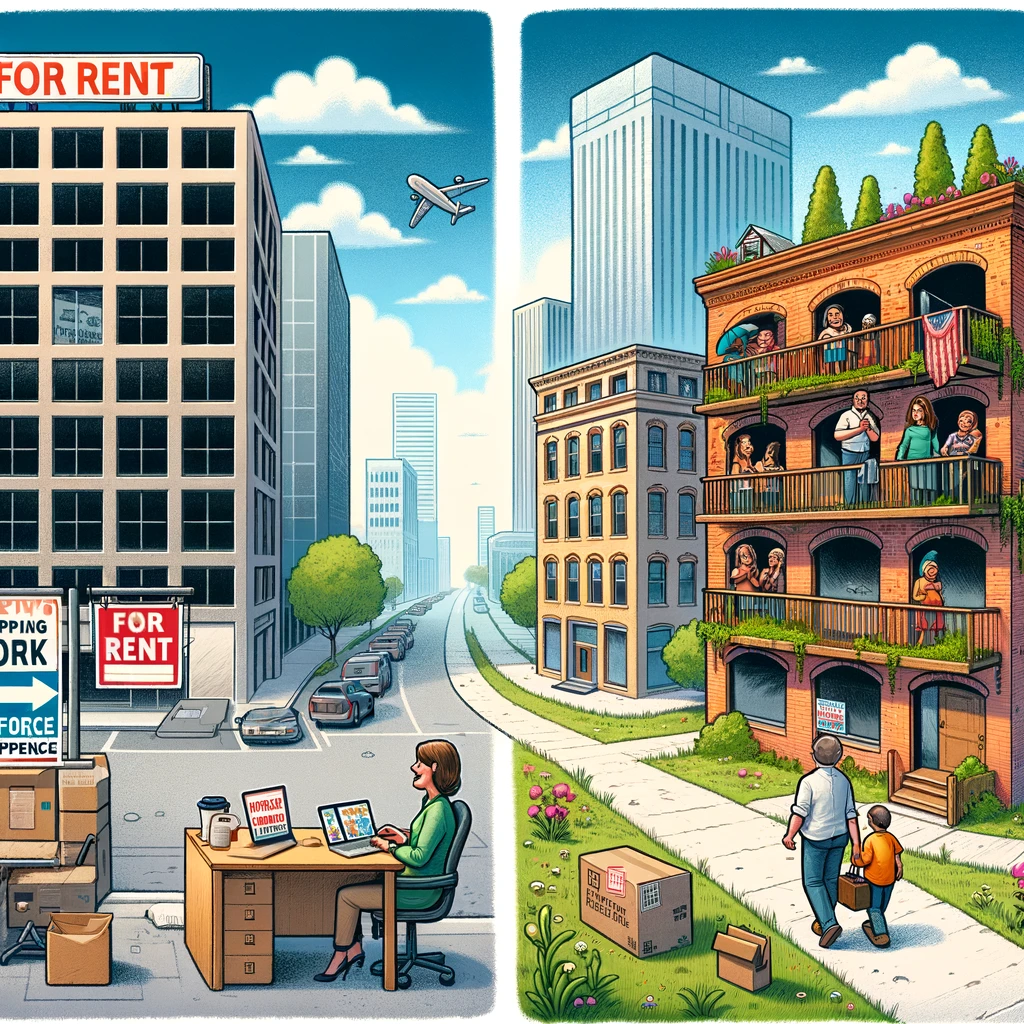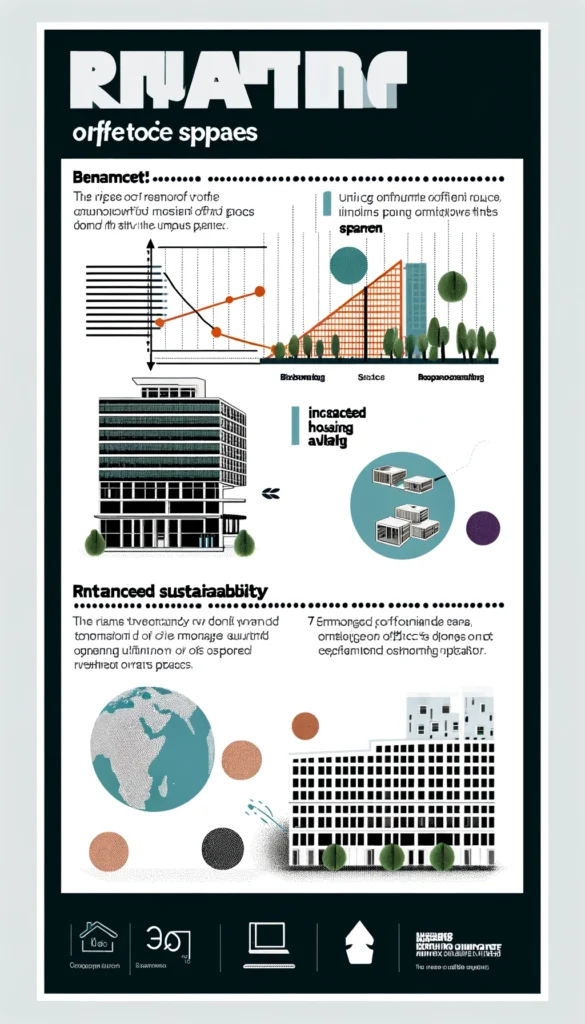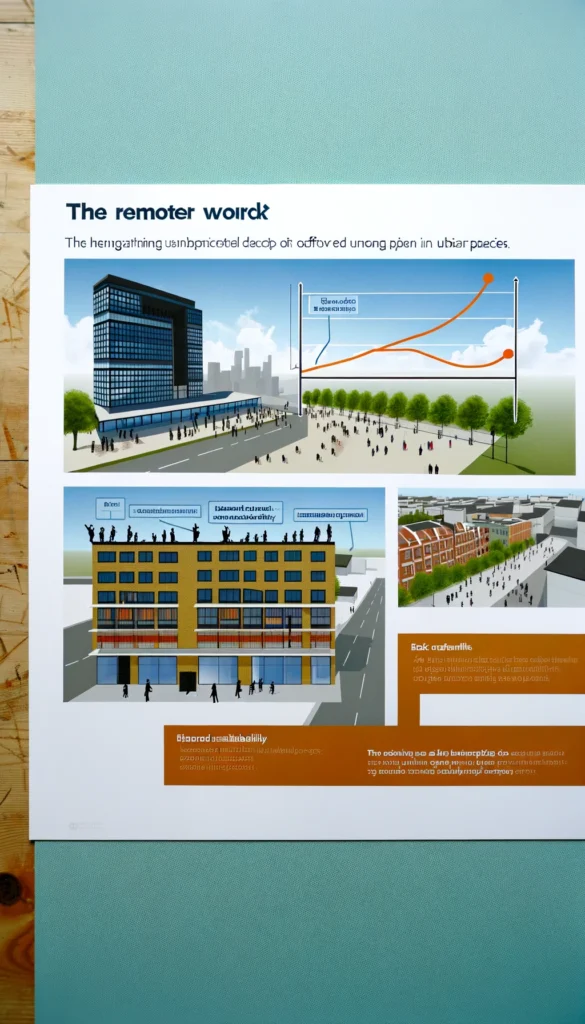
In the wake of the global pandemic, the fabric of our work life underwent a transformation so profound that its ripples are reshaping the very contours of urban development. The shift toward remote work, a trend accelerated by the pandemic, is not just a change in where we work but a catalyst for a broader reconsideration of how we use our built environments. This essay explores the implications of changing work patterns on urban spaces, particularly focusing on the decreased demand for office space and the rise of commercial-to-residential conversions as a financially and socially beneficial response.
**The Remote Work Revolution
The pandemic served as an unprecedented experiment in remote work, demonstrating that many jobs could be done effectively outside traditional office settings. This revelation has led to a sustained preference for remote or hybrid work models, significantly reducing the daily occupancy of office buildings. The once bustling commercial hubs now face an existential question: what purpose can these spaces serve when their original function becomes obsolete?

**Financial Implications and Opportunities
The decline in demand for office space has precipitated a drop in commercial real estate values, presenting a unique opportunity to address another pressing issue—urban housing shortages. Converting office spaces into residential units emerges as a financially attractive proposition, offering a dual benefit: revitalizing underused properties and contributing to the housing supply.
**Sustainable and Social Benefits
Beyond the financial aspect, this transition champions sustainability. Repurposing existing structures reduces the need for new construction, thereby minimizing the associated environmental footprint. Moreover, converting offices into homes can create more vibrant, mixed-use communities, reducing the urban sprawl and promoting a model of living that is more in tune with sustainable urban planning principles.
**Community and Connectivity
The transformation of office buildings into residential spaces fosters a sense of community and connectivity, counteracting the isolation that can come with remote work. By integrating living spaces into urban centers, we encourage a more interactive, connected urban life where amenities and services are just a walk away, reducing reliance on vehicular transport and enhancing the quality of urban living.

**A Vision for the Future
As we navigate this transition, it’s crucial to approach these conversions with thoughtful planning, ensuring that these new residential spaces are not just habitable but livable. They should offer green spaces, access to services, and community areas, thus creating environments where people can thrive.
In conclusion, the shift toward remote work has opened a window of opportunity to reimagine and repurpose our urban spaces. By converting underutilized office buildings into residential units, we can address housing shortages, promote sustainable living, and create more cohesive communities. This is more than just an economic or architectural challenge; it’s a chance to redefine the essence of urban living for a post-pandemic world. Embracing this change isn’t just about adapting to a new work paradigm—it’s about seizing the opportunity to build more resilient, sustainable, and inclusive cities for future generations.